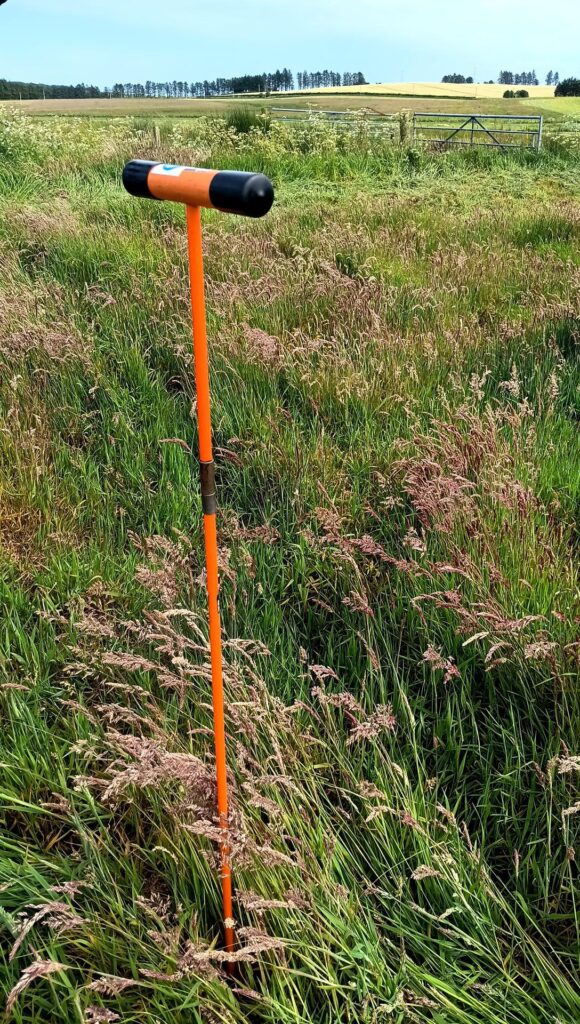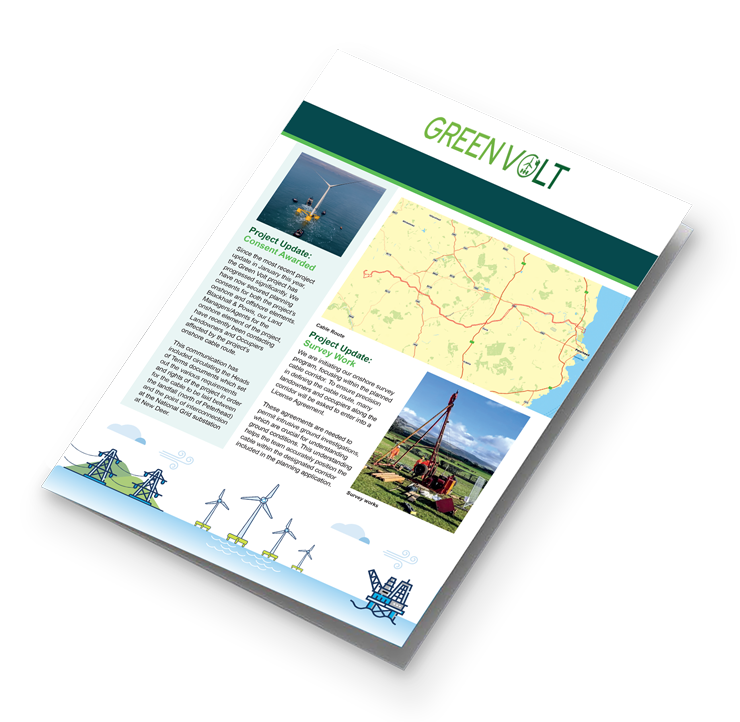As part of our ongoing commitment to environmental responsibility and project safety, the Green Volt offshore wind project has over recent weeks been conducting peat probing surveys along the onshore cable corridor. These surveys are an important early step in preparing the ground for the installation of the electrical cable that will connect our offshore infrastructure to the national grid.
But what exactly is peat probing — and why is it necessary?
Peat probing is a geotechnical and environmental surveying technique used to investigate peat deposits in the ground. Peat is a type of soil made up of partially decomposed organic material, often found in wetland areas. It is spongy, fibrous, and can vary significantly in depth, structure, and stability.
To conduct a peat probe, specialists use slim rods or probes inserted into the ground at intervals along the planned route. This allows them to measure the depth, type, and consistency of peat without causing major disturbance to the environment.

Why is peat probing important?
Peatlands are ecologically sensitive areas and act as important carbon sinks, storing vast amounts of carbon dioxide that would otherwise contribute to climate change. They are also known for their unstable ground conditions, which can pose engineering challenges. For a project like Green Volt, understanding the presence and condition of peat is crucial for three main reasons:
Engineering integrity:
Cables need to be laid on stable ground to prevent sagging, movement, or long-term degradation. If deep peat is present, alternative engineering solutions may be required, such as deeper trenching, protective ducting, or rerouting.
Environmental protection:
By identifying peatland areas early, we can avoid or minimise disturbance to these habitats, helping protect their role in biodiversity and climate regulation.
Regulatory compliance:
Peatland management is often a key part of environmental impact assessments, and thorough probing is required to meet planning and permitting standards.
What happens next?
The data gathered from peat probing will be analysed by our environmental and engineering teams. This will inform the final design and routing of the onshore cable, ensuring we minimise environmental impact while maintaining technical safety and efficiency. We’re committed to working closely with local communities, landowners, and regulators to ensure that all our onshore activities — including peat management — are carried out to the highest environmental and engineering standards.
Stay connected
We’ll continue to share updates as the Green Volt project progresses. For more insights into our environmental assessments or construction plans, sign up to our newsletter here.



